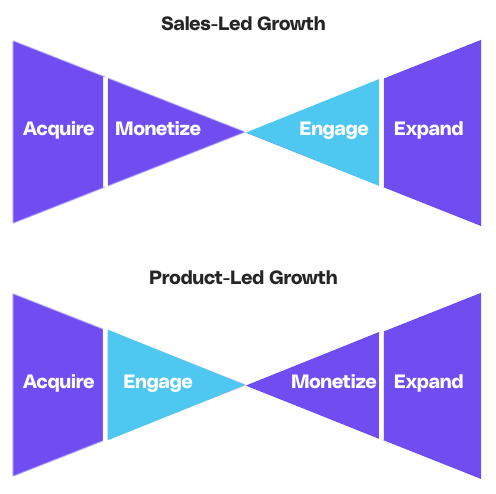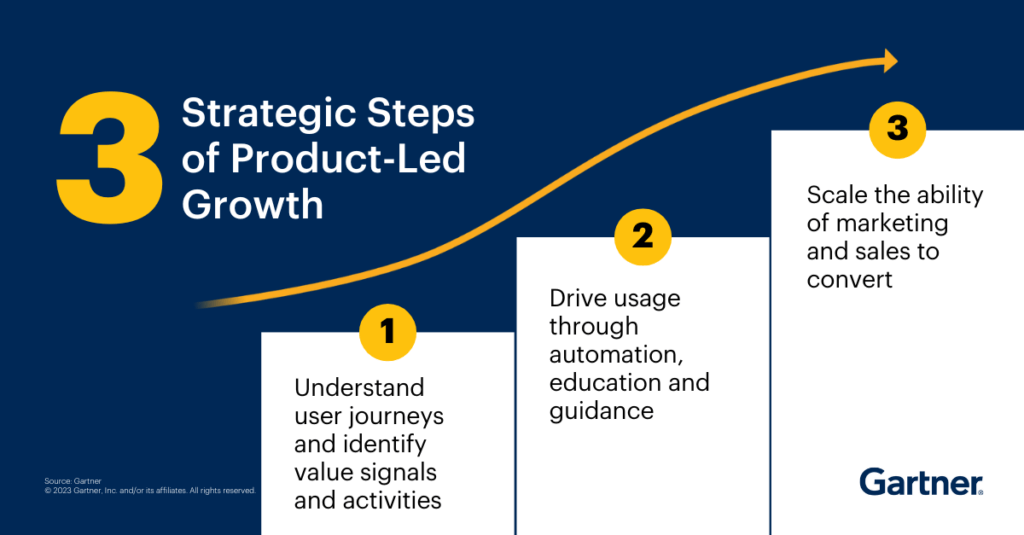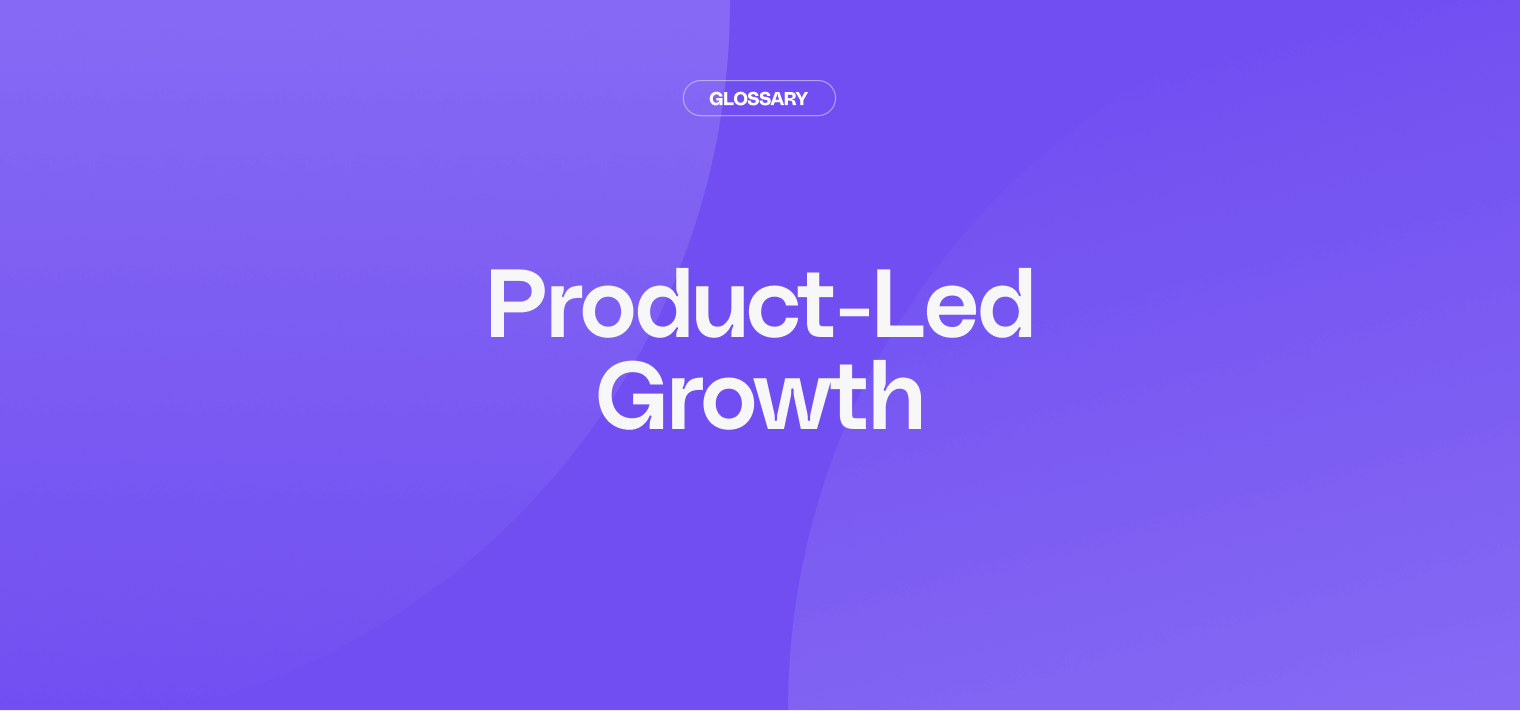Product-Led Growth (PLG) is a business strategy that focuses on driving growth by placing the product at the center of the customer acquisition and conversion process. Unlike traditional sales-led approaches, where the main emphasis is on sales and marketing efforts, product-led companies prioritize product adoption and usage as the primary driver of customer acquisition and retention.
| Key Element | Description | Tips for Implementation |
|---|---|---|
| Understanding Product-Led Growth | Focuses on driving growth by prioritizing product adoption and usage. | Shift focus from sales-led to product-led strategies, emphasizing user experience. |
| Definition of PLG | Uses the product itself as the primary driver of acquisition, conversion, and retention. | Provide an exceptional user experience and deliver value upfront to attract and retain users. |
| Principles of PLG | User-centric approach and data-driven decision making. | Focus on understanding user needs, iterate based on feedback, and use data for informed decisions. |
| Benefits of PLG | Increased customer satisfaction and enhanced market adaptability. | Improve customer satisfaction through value delivery and stay agile to adapt to market dynamics. |
| Challenges in Implementation | Internal resistance, resource allocation, and data privacy concerns. | Address mindset shifts, allocate resources wisely, and ensure data protection measures. |
Understanding the concept
Product-Led Growth is a relatively new concept that has gained popularity in recent years. It represents a fundamental shift in the way companies approach their growth strategies. Instead of relying heavily on sales and marketing techniques to persuade customers to make a purchase, PLG focuses on creating a product experience that is so compelling and user-friendly that it drives users to naturally adopt and advocate for the product.
The definition of product-led growth
Product-Led Growth can be defined as a growth strategy that leverages the product itself as the primary driver of customer acquisition, conversion, and retention. By providing an exceptional user experience and delivering value upfront, product-led companies are able to attract and retain customers more efficiently.
The importance of product-led growth
Product-Led Growth is gaining significance in today's business landscape due to several factors. Firstly, consumers are becoming more empowered and have access to abundant product information and reviews. They expect to be able to try a product before making a purchase decision. Secondly, the rise of SaaS (Software as a Service) and subscription-based business models has made it easier for companies to offer free trials or freemium versions of their products, enabling users to experience the value before committing.
Furthermore, the cost of acquiring customers through traditional sales and marketing channels is increasing, making it crucial for companies to find more efficient and cost-effective ways to acquire and retain customers. PLG allows companies to align their growth strategy with the needs and preferences of modern consumers, driving sustainable growth through customer satisfaction and product advocacy.

The principles of product-led growth
Product-Led Growth is based on several key principles that guide companies in implementing a successful PLG strategy.
User-centric approach
At the heart of Product-Led Growth is a deep focus on understanding and meeting the needs of users. By putting the user at the center of product development and constantly iterating based on user feedback, companies can build products that are tailored to their target audience. This user-centric approach builds trust and loyalty, driving higher adoption rates and user satisfaction.
Data-driven decision making
Another crucial principle of PLG is the use of data to drive decision making. By collecting and analyzing user data, companies can gain valuable insights into user behavior, preferences, and pain points. These insights enable companies to optimize the product experience, identify opportunities for growth, and measure the impact of product-led initiatives.

The benefits of product-led growth
Implementing a Product-Led Growth strategy offers several benefits for companies looking to drive sustainable growth and enhance customer satisfaction.
Increased customer satisfaction
By focusing on delivering value upfront and continuously improving the product experience, companies can significantly enhance customer satisfaction. When users can easily understand and derive value from a product, they are more likely to become loyal customers and advocates for the brand. This leads to higher retention rates and increased customer lifetime value.
Enhanced market adaptability
Product-Led Growth allows companies to be more agile and responsive to changing market dynamics. By closely monitoring user feedback and behavior, companies can quickly identify emerging trends and adapt their product strategy accordingly. This adaptability helps companies stay ahead of the competition and seize new growth opportunities.
Implementing a product-led growth strategy
Transitioning to a product-led model requires careful planning and execution. Here are some key steps to consider:
Key steps to transitioning to a product-led model
- Understand your target audience: Gain in-depth knowledge of your target audience's needs, pain points, and preferences.
- Define your product's unique value proposition: Clearly articulate the value your product brings to users and how it solves their problems.
- Design an exceptional user experience: Invest in user experience design to create an intuitive and engaging product interface.
- Implement a free trial or freemium model: Provide users with the opportunity to try your product before committing to a purchase.
- Measure and iterate: Continuously collect and analyze user data to identify areas for improvement and optimize the product experience.

Challenges in implementing product-led growth
While the benefits of Product-Led Growth are significant, there are also challenges that companies may encounter during implementation. These challenges include:
- Internal resistance to change: Transitioning to a product-led model may require a shift in mindset and processes, which can be met with resistance from employees accustomed to traditional sales-led approaches.
- Resource allocation: Successfully implementing a PLG strategy requires allocating resources to product development, user onboarding, and ongoing support. Companies must carefully manage their resource allocation to ensure the success of the product-led initiatives.
- Data privacy and security: Collecting and analyzing user data raises concerns about privacy and security. Companies must invest in robust data protection measures and comply with relevant regulations to build and maintain customer trust.
Measuring the success of a product-led growth strategy
Measuring the success of a Product-Led Growth strategy is crucial to understand the impact on business performance and inform future decision making. Here are some key performance indicators (KPIs) to consider:
Key Performance Indicators for product-led growth
- Product adoption rate: Measure the percentage of users who have successfully onboarded and started using the product.
- Conversion rate: Track the percentage of trial or freemium users who convert into paying customers.
- Customer satisfaction score: Collect feedback from users to gauge their satisfaction with the product experience.
- Customer lifetime value (CLTV): Calculate the average revenue generated from a customer throughout their entire relationship with the company.

(Source: Qualtrics)
Understanding the impact of product-led growth on business performance
Implementing a Product-Led Growth strategy can lead to several positive impacts on business performance. Companies that successfully embrace PLG often experience increased revenue growth, higher customer retention rates, and improved market competitiveness. Additionally, the data-driven approach of PLG enables companies to make more informed decisions, identify product-market fit, and drive innovation.
In conclusion, Product-Led Growth is a transformative strategy that leverages the product itself to drive customer acquisition, conversion, and retention. By prioritizing user-centricity, data-driven decision making, and delivering value upfront, companies can unlock sustainable growth and achieve a competitive advantage in today's rapidly evolving market.
Unlock your product's viral potential with Cello
Embrace the full potential of Product-Led Growth by turning your users into powerful advocates with Cello. Our peer-to-peer referral program is designed to integrate seamlessly with your SaaS product, making it effortless for users to share and promote your product. With Cello, you can experience viral growth through a delightful sharing experience that's embedded right inside your product. Benefit from our success-based pricing, robust management tools, and seamless integration with your existing systems. Ready to see how Cello can transform your user base into your most valuable growth channel? Book a demo and start your journey towards accelerated growth today.
Resources
Related Articles

Best Referral Software for SaaS with Chargebee Integration: The Definitive Guide to Revenue Attribution
The Strategic Convergence of Billing and User-Led Growth In the contemporary landscape of B2B ...

Automating Stripe Referral Tracking: A Cello Integration Guide
Scaling a referral program manually is impossible. The integration between Cello and Stripe ...

